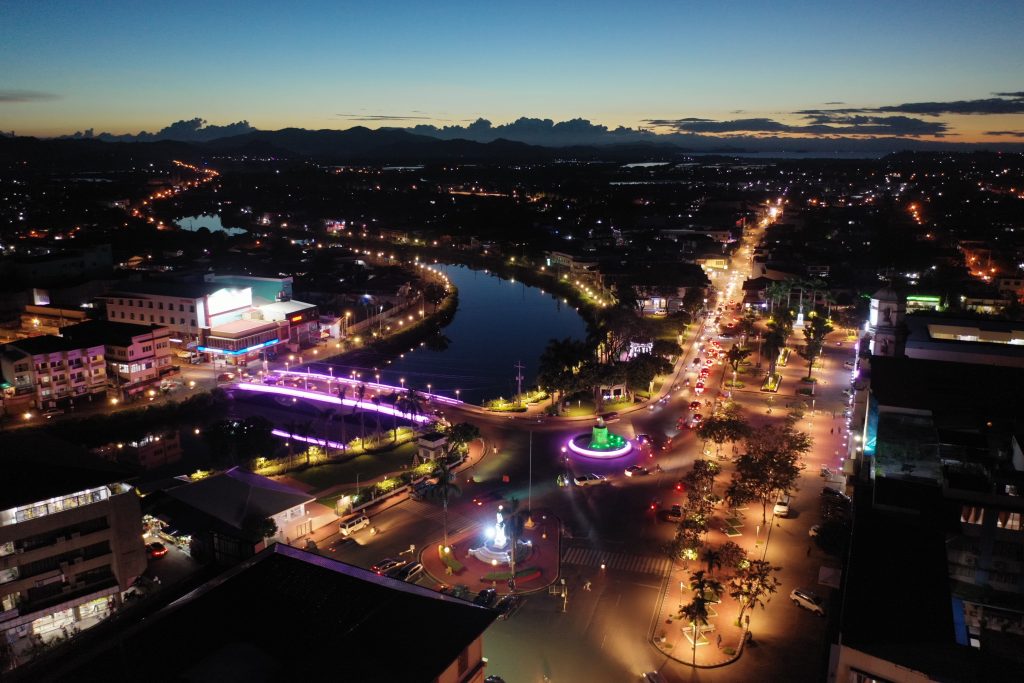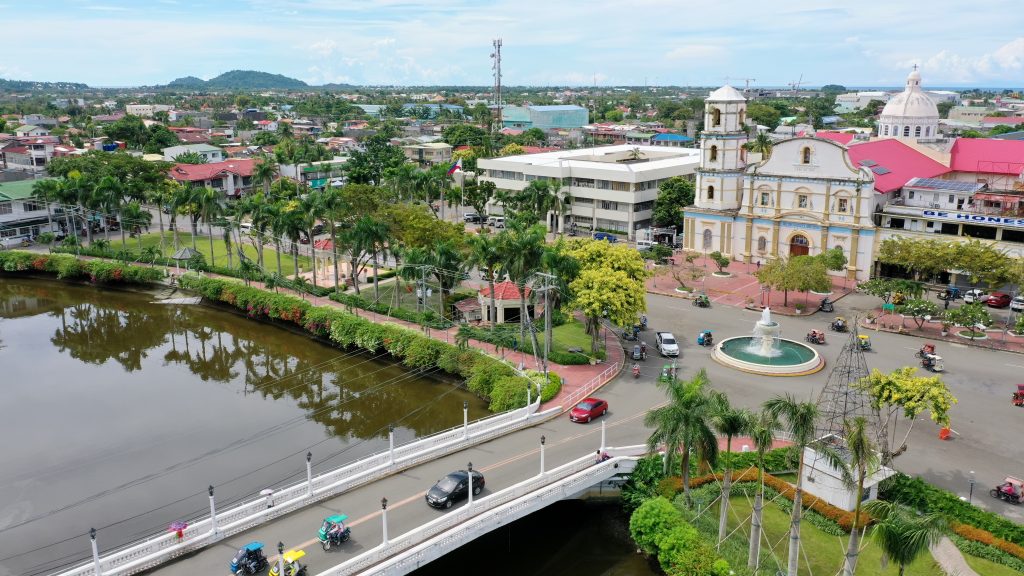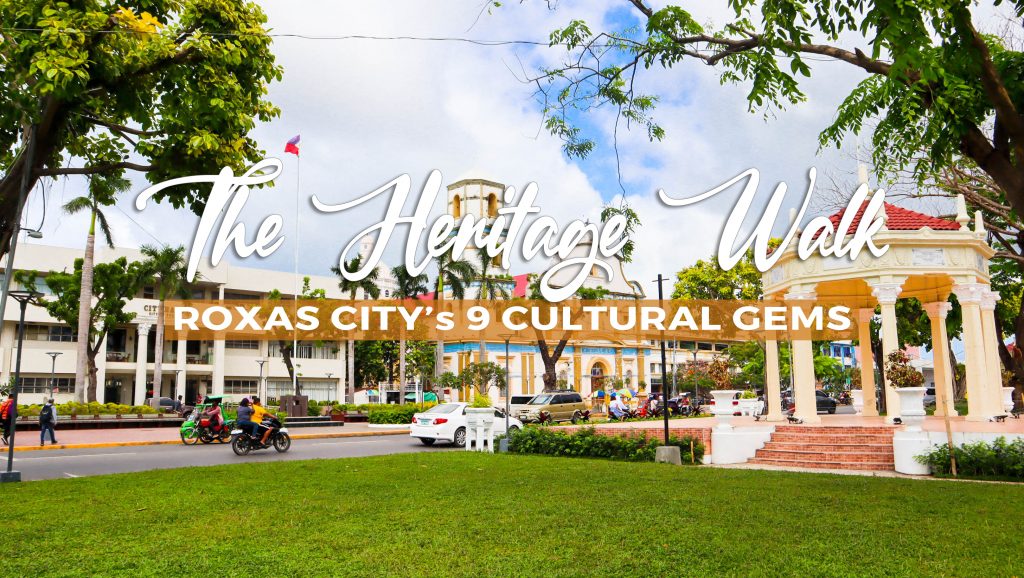
The Heritage Walk
Roxas City’s 9 Cultural Gems
Roxas City is not just your ideal seafood destination. Unbeknownst to many, it keeps interesting history that you will only know if you embark on a quick cultural tour right at the heart of the city. Once upon a time, grand houses of the rich lined the banks of Panay River but advancing Japanese forces forced the locals to burn their homes rather than let the enemies pillage and rape their dear abodes. At an even earlier date, the river was a sprawling place for trade and commerce. Indeed, a visit to the heart of Roxas City in a trip down memory lane.
Ang Panublion Museum – The Water Tank Museum
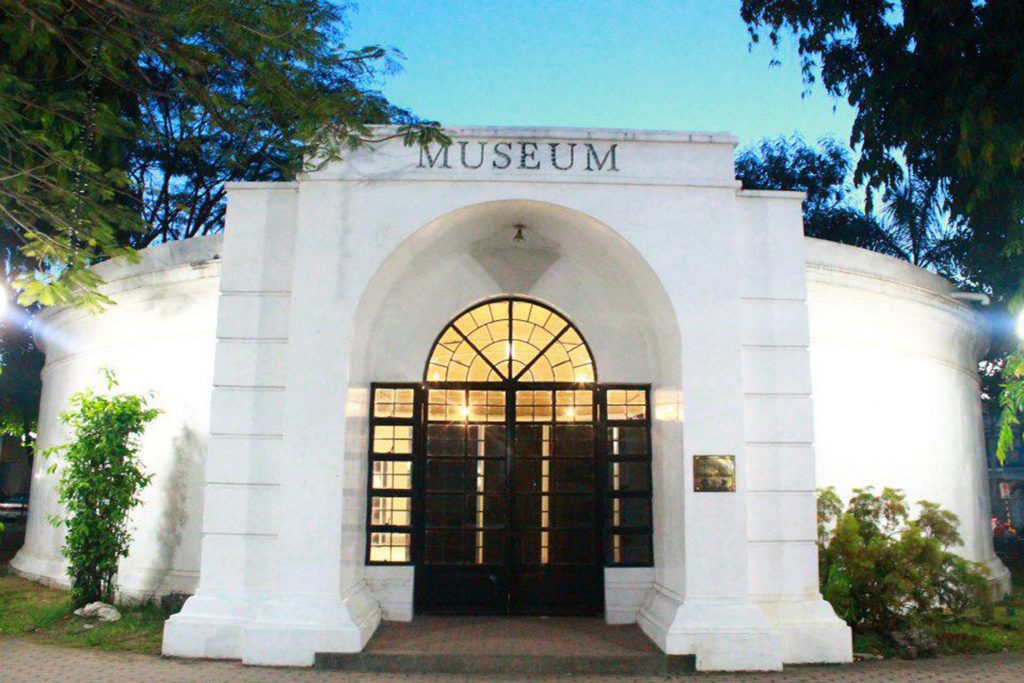
Ang Panublion Museum Facade 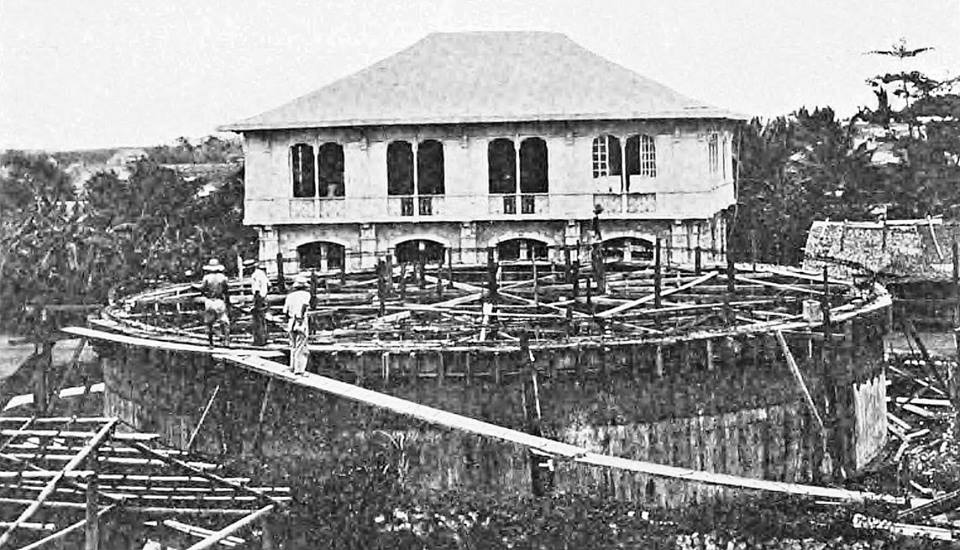
Construction of the water tank, present-day Ang Panublion Museum, c1916
In 1916, construction of a water tank near the town’s presidencia commenced to provide water to the Capiznons during the dry months. The former water tank was eventually repurposed into a museum, which now houses valuable historical and archeological artifacts. In 2017, a new building was inaugurated beside the old water tank to accommodate more exhibits and welcome more guests.
President Manuel Roxas Statue and Marker
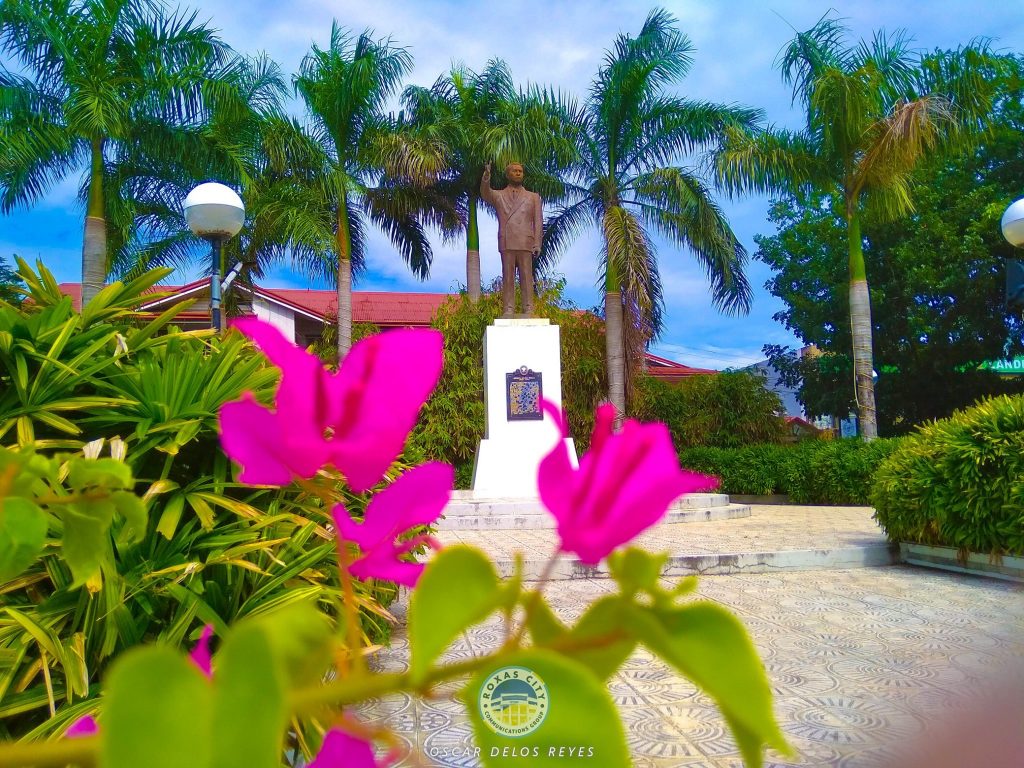
Erected in honor of the most illustrious son of the Province of Capiz, the statue of President Manuel A. Roxas was awarded with a historical marker by the National Historical Commission of the Philippines in 2012. In 2016, a bronze statue was unveiled to replace the old one to commemorate the late president’s 68th death anniversary. It was a replica of a Guillermo Tolentino statue, which was turned over by the family to the National Museum in Manila.
President Manuel Roxas Birthplace
Considered as the oldest surviving bahay na bato in Capiz, the house was built by Don Eleuterio Acuna, President Roxas’ grandfather. His mother, Rosario Acuna was two months pregnant when she moved with her father shortly after her husband, Gerardo Roxas, was murdered by the guardia civiles in Panay. Eight months later, she gave birth to a baby she named Manuel. The house was inherited by Don Eleuterio’s youngest daughter, Jovita, and ownership was passed on to this branch of the family that maintains the house to this day. The well-preserved house showcases period furniture and family memorabilia.
Roxas City Bandstand
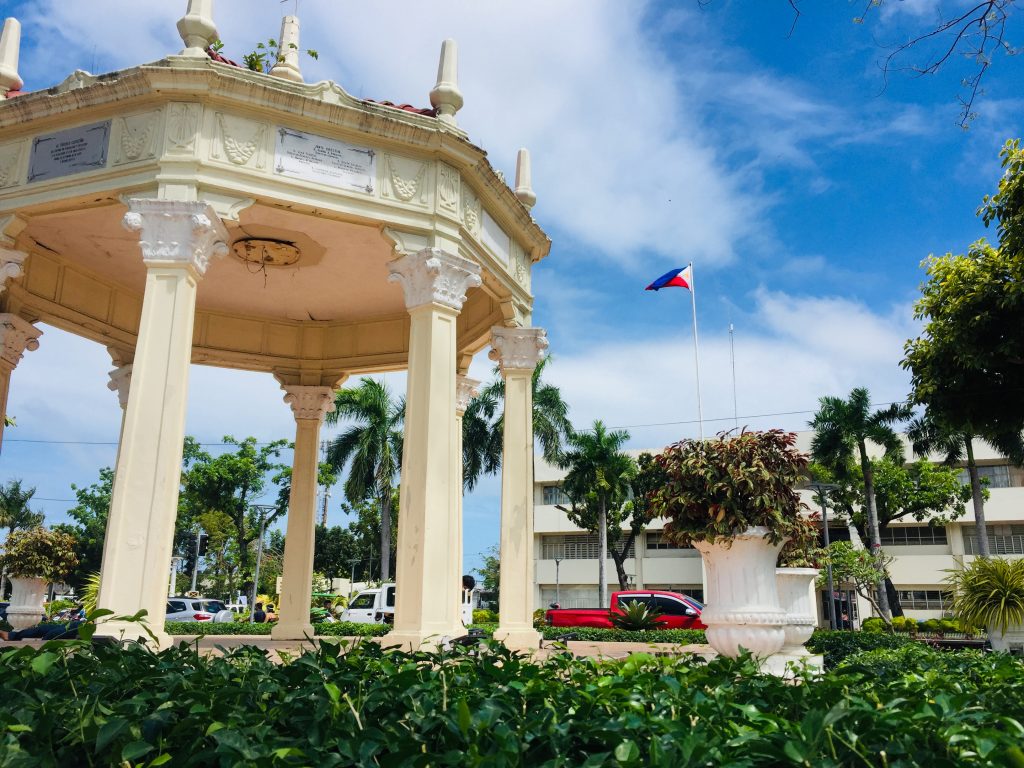
This quintessential American-era infrastructure epitomizes the wealth of old society and flamboyance of prewar architecture. Built in 1926 under the auspices of the city’s premier social club, Circulo Galante, it was designed in an ornate style reminiscent of the structures built back then. The bandstand has served as the center of town life. Here, many fiesta queens were crowned and it serves as a venue for numerous community activities today. The bandstand was designed as an earthquake proof octagonal pavilion that could be moved from place to place as its base was rounded or arched for flexibility. A series of renovation eventually saw the pavilion now fixed in its present site.
Roxas City Cathedral
The Immaculate Conception Parish was founded in 1707 while the church was built in 1872. It was praised as one of the biggest churches in Western Visayas and one of the most beautiful in the Philippines. It was heavily damaged by a storm and then by an earthquake, and later by World War II. It was repaired in the 1950s and only the Spanish walls behind remains as a stark reminder of its storied past. The church’s interior is painted with yellow and the altar was rehabilitated back to its prewar glory.
Roxas City Bridge
The Roxas City Bridge was built between 1908 and 1910, when the American’s bridge-building hysteria was at its height. It withstood the bombings of World War II and remains the steady link that connects the Capiznons separated b y the Panay River.
The Roxas City Fountain
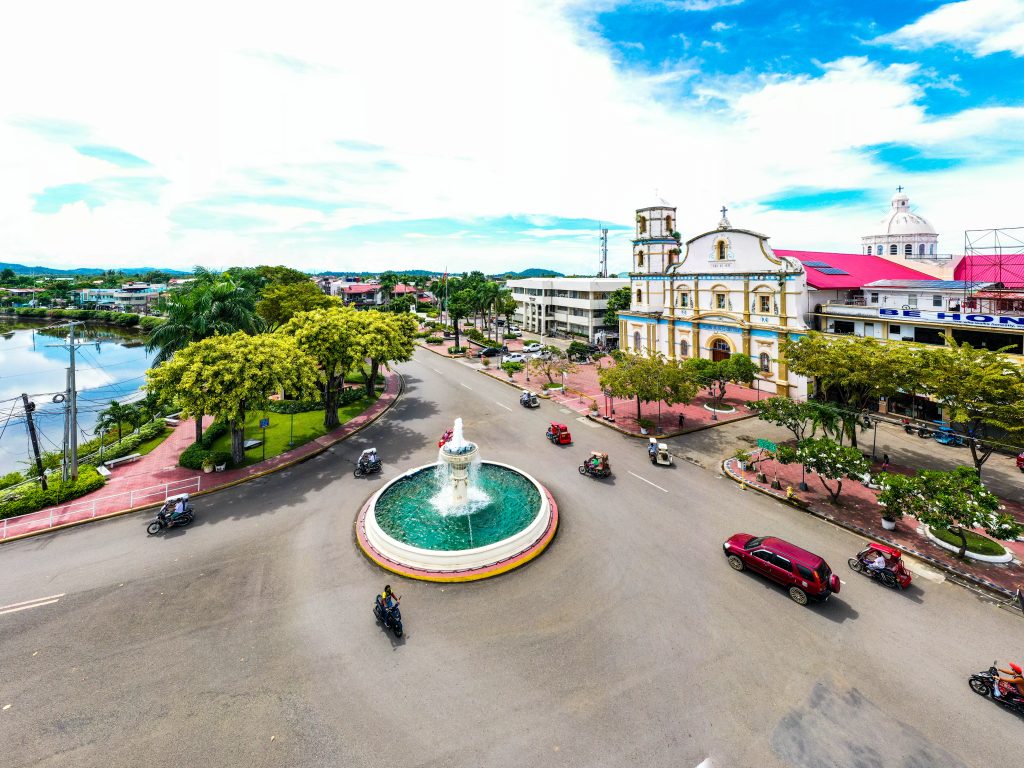
Dubbed as kilometer zero, the Roxas City Fountain was built in 1925. The original foundation was severely damaged by shrapnels during War II until it was restored in 1946. Eight fishes were placed on its rim and from their mouth, water spout to the center. The fountain was renovated in 1999 to replace the broken jet spray and was given a controversial face-lift in 2007, featuring four male statues on a knee-bent position that seemed to carry the load of life. In 2010, it was once again redesigned to make it look like the original structure.
Jose Rizal Monument
Just fifteen years after Rizal’s death, Governor Jose Cortez Altavas had the Jose Rizal monument built in 1911. This makes it one of the oldest Rizal rebultos. The words “PATRIA” (homeland) “LIBERTAD” (liberty) “ JUSTICIA” (justice) are inscribed on the monument, as a reminder of Rizal’s ideals. In honor of these, Governor Altavas named his daughters: PATRIA Amada, LIBERTAD Immaculada, and JUSTICIA Perfecta
Capiz Provincial Capitol
From a two-story government-owned wooden house, the Capiz Provincial Capitol was turned into a concrete building in 1911 through the efforts of Gov. Jose Cortez Altavas. In 1945 to 1949, a new floor was added. Traces of its American colonial past, like the eagle atop the entrance, remain intact. / Christian George Acevedo
Read more Roxas City’s Heritage Monuments by Paolo Alcazaren
https://www.philstar.com/lifestyle/modern-living/2016/04/29/1578114/eight-heritage-monuments-roxas-city-plaza
References:
Burgos, N. Old water tank repository of Capizartifacts .Philippine Daily Inquirer.
Inocencio, A. Roxas City’s fountain – historic and controversial rotunda. The Daily Guardian.
Ang Panublion Museum Heritage Pack
Picazo, E. (editor) The Acunas of Capiz: Souvenir Book.
Sangoyo, E. Roxas City’s fountain – historic and controversial rotunda. LakadPilipinas (blog).

